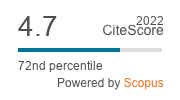Spectroscopy is a rapid, non-destructive, and low-cost analytical technique that has the potential to complement more resource-intensive analytical methods. We explored the use of spectral methods to differentiate maize genotypes and assess aflatoxin (AF) contamination in maize kernels. We compared the performance of two instruments: a research-grade ultraviolet-visible-near infrared (UV-Vis-NIR) spectrometer that measures reflectance from 304 -1,085 nm, and a miniaturised NIR spectrometer that measures reflectance from 740-1,070 nm. Both systems were used to predict AF levels in maize kernels from a single genotype and across 10 genotypes, and to predict genotype for the latter. A partial least square discriminant analysis model was trained on 70% of the kernels and tested on the remaining 30%. The classification accuracy for 10 maize genotypes was 71-72% using the UV-Vis-NIR instrument on 1,170 kernels, and 65-66% using the NIR device on 740 kernels. The classification accuracy for 247 AF-contaminated kernels of a single genotype using the UV-Vis-NIR instrument was 71, 82, and 92% for AF thresholds of 20, 100, and 1000 μg/kg, respectively. Using the same spectrometer on 872 kernels from 10 genotypes, AF classification accuracy was 67, 90, and 95% in validation sets for AF thresholds of 20, 100, and 1000 μg/kg, respectively. The UV-Vis-NIR instrument and the NIR device had similar classification accuracies for AF thresholds of 100 and 1000 μg/kg, whereas the NIR device had higher accuracy for the AF threshold of 20 μg/kg. Reflectance spectroscopy outperformed visual sorting and the bright greenish yellow fluorescence test in identifying AF levels. Applying spectral analysis to estimate mycotoxin levels and to identify maize genotypes could contribute to regional toxin surveillance and action efforts. Further, using AF-associated spectral features for grain sorting can reduce AF exposure.
RESEARCH ARTICLE
Application of reflectance spectroscopy to identify maize genotypes and aflatoxin levels in single kernels
M. Aoun Related information
1School of Integrative Plant Science, Cornell University, Ithaca, NY 14853, USA.
2Department of Entomology and Plant Pathology, Oklahoma State University, Stillwater, OK 74078, USA.
*Corresponding author 1: ma792@cornell.
, C. Siegel Related information2Department of Entomology and Plant Pathology, Oklahoma State University, Stillwater, OK 74078, USA.
*Corresponding author 1: ma792@cornell.
1School of Integrative Plant Science, Cornell University, Ithaca, NY 14853, USA.
, G.L. Windham Related information3USDA, Agricultural Research Service, Corn Host Plant Resistance Research Unit, Mississippi State, MS 39762, USA.
, W.P. Williams Related information3USDA, Agricultural Research Service, Corn Host Plant Resistance Research Unit, Mississippi State, MS 39762, USA.
, R.J. Nelson Related information1School of Integrative Plant Science, Cornell University, Ithaca, NY 14853, USA.
*Corresponding author 2: rjn7@cornell.
*Corresponding author 2: rjn7@cornell.
World Mycotoxin Journal: 15
(4)- Pages: 327 - 342

Published Online: August 08, 2022
Abstract
Keywords: reflectance spectroscopy, maize, aflatoxin, single kernels
2023 Journal Impact Factor
2.0
source: Journal Impact Factor 2023™ from Clarivate™

Institutional Offers
For institutional orders, please contact [email protected].
Purchase Options
-
P. Battilani and M. Camardo Leggieri
-
F. Xu, R.C. Baker, T.B. Whitaker, H. Luo, Y. Zhao, A. Stevenson, C.J. Boesch and G. Zhang
-
A.O. Aasa, F.F. Fru, O.A. Adelusi, S.A. Oyeyinka and P.B. Njobeh
-
F. Wu
-
V. Ostry
-
V. Ostry
-
R. Bandyopadhyay, A. Ortega-Beltran, A. Akande, C. Mutegi, J. Atehnkeng, L. Kaptoge, A.L. Senghor, B.N. Adhikari and P.J. Cotty
-
A. Logrieco, A. Moretti and M. Solfrizzo
-
G. Schatzmayr and E. Streit
-
B. Grenier and I. Oswald



